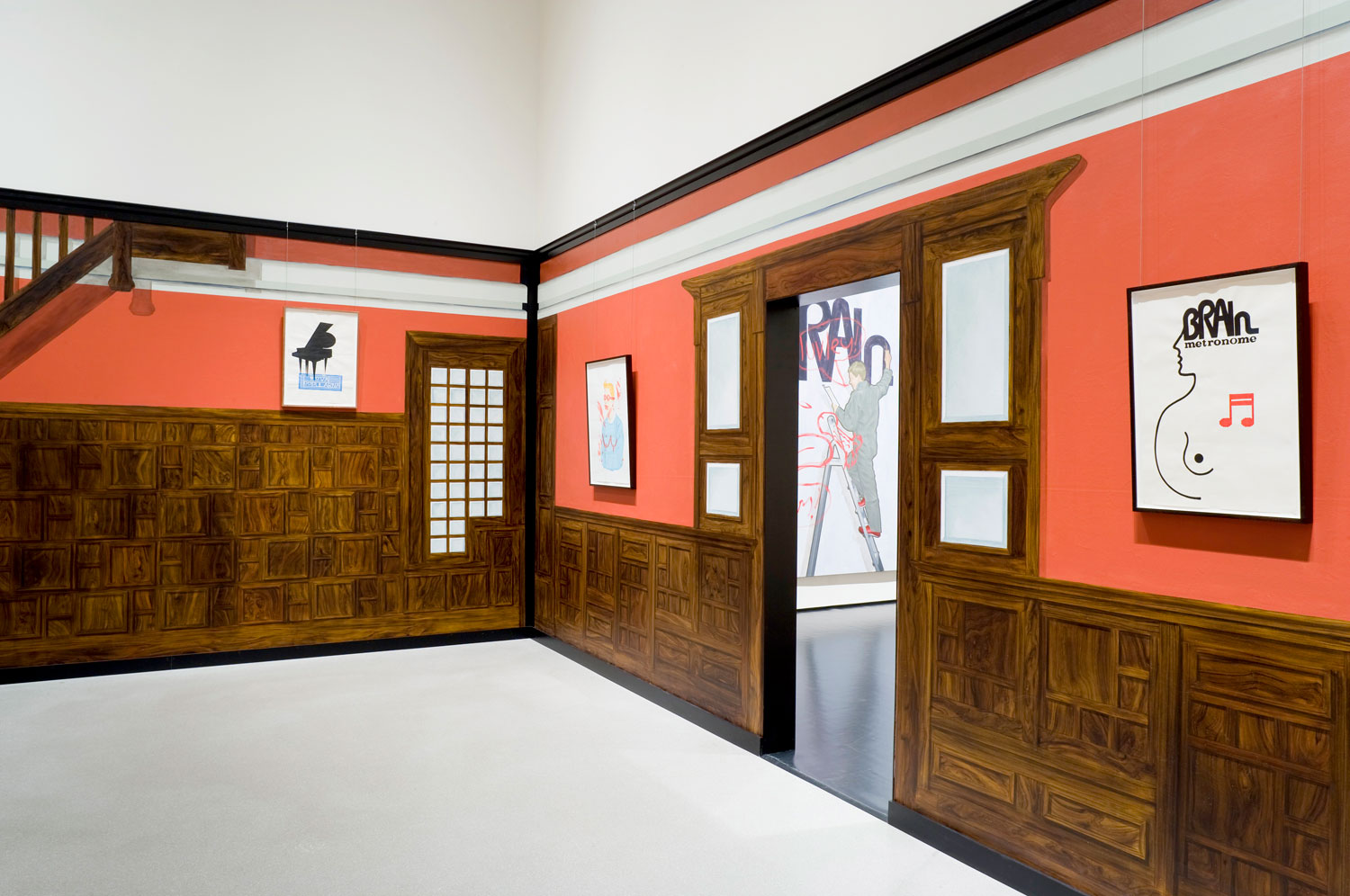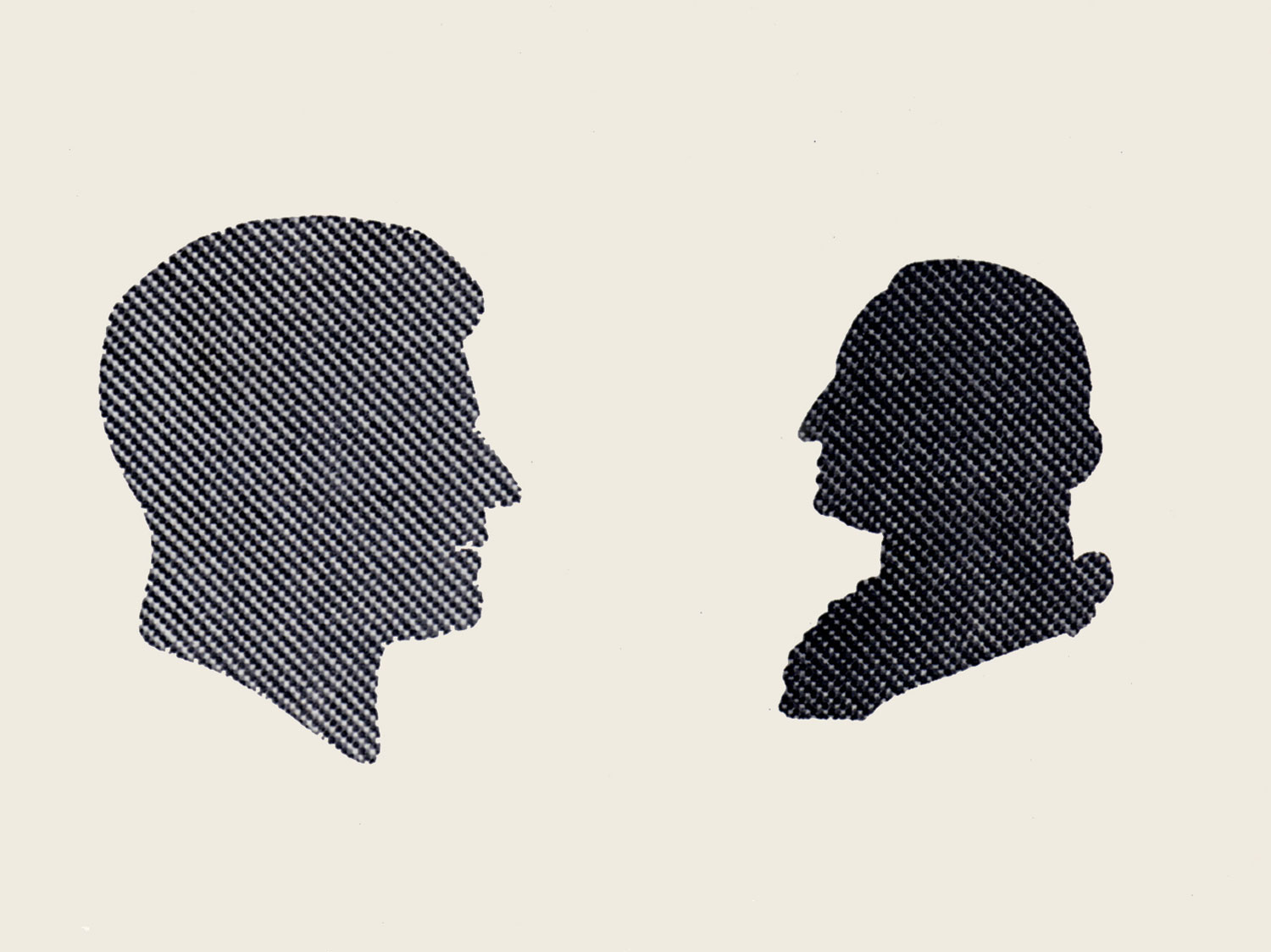
Attempting a concise survey of the work of David Maljković seems an elusive goal. Within Maljković ’s output over the last ten years — which spans film, installation, collage, publications and exhibition making — his temporal, aesthetic and political co-ordinates are constantly in flux, one often serving as a decoy for the other. As such, developments and trajectories — his own and the histories he addresses — are called into question. Maljković ’s recent exhibition series called “Sources in the Air” is a good starting point for understanding his modus operandi. The various iterations of the exhibition, which began at the Van Abbemuseum, followed by the Baltic and GAMeC, differed vastly in scale and mode of address. Much of this was due to the different architectural parameters of the venues, which gave Maljkovic´ the opportunity to reconfigure works in shifting relationships to one another and the spaces they occupied. Tampering with the way in which audiences engage with artworks, thus generating new interpretations, he unsettles the very notion of the retrospective, which often aims at a singular, linear reading across an artist’s oeuvre.
The trilogy Scene for a New Heritage (2004-06), which occupied the central room in the first presentation of “Sources in the Air,” is perhaps his most well known work. The three films are the most striking example of how Maljković projects both forward and back, into the past and toward the future. Filmed at the site of Vojin Bakić’s (1915-1992) ruined monument to the Yugoslav partisans of Kurdan and Banija in Petrova Gora, Croatia, which was built in 1982, the first chapter of the trilogy is set in 2045. Three young men drive a car clad in silver foil through tree-lined roads. They arrive at Petrova Gora — an extraordinary modernist monument, its curved silver forms failing to mask the empty window frames and abandoned interior. The men circle the entrance of the building and sing to each other in long howling screams. Seemingly trying to understand the function and meaning of this strange site, the subtitles read: “Times were different back then.”
Scene for a New Heritage 1 (2004) is rooted in a very specific history and aesthetic: the film is set on May 25 — Tito’s birthday — and Bakic´’s building is an icon of socialist modernism, where the curators What, How and For Whom? (WHW) tell us that during the country’s socialist past “almost obligatory visits to this monument amounted to a collective social ritual.” This monument — and the vision it once held — now lies empty and neglected. Yet Maljkovic´ ’s focus lies beyond the specifics of Bakic´’s or even socialist modernism in Croatia, asking us to think past the history of Yugoslavia, its socialist and modernist heritage. His protagonists speak in a language not tied to any country and they seek to repurpose it for their times: “We set out in quest of heritage,” one of the men sings. “I suggest we change the function of this building.” As modernism’s passing has left us with empty, neglected visions, Scene for a New Heritage speaks of our inability to imagine or project into the future. It explores the possibility of thinking across different time frames, jolting us out of the perpetual present — the neoliberal dream of the end of history.


Indeed, the notion of projection is constantly at stake — whether that be by drawing on the remnants of modernism or by registering our current inability to think forward or back. This is why Maljkovic´ ’s relationship to Yugoslavian modernism is revealing. Bakic´ — a prominent sculptor who is widely associated with the break with socialist realism and who adopted a new aesthetic freedom — is a figure that emerges. The artist has also often turned to the more historically peripheral group EXAT 51, known for their progressive artistic activity in the context of Yugoslav socialist modernism. In Images with their Own Shadows (2010), he draws on the abstract sculptures of the Yugoslav collective, founded in 1951 and whose name is abbreviated from Experimental Atelier. Several youths are filmed with their mouths opening and closing to the sound of a projector clicking on and off, interspersed with the voice of group member Vjenceslav Richter (1917-2002). “As long as there are studios that experiment, EXAT has not ceased to live and work,” he says at the close of the film. Maljkovic´ deploys EXAT 51 — like other historical references — not to re-live a past, but as a means to locate its distance, just as Walter Benjamin famously noted: “To articulate the past does not mean to recognize it ‘the way it really was.’ It means to seize hold of a memory as it flashes up in a moment of danger.” By recalling the history, aesthetic and ideology of Richter and the EXAT 51 group alongside images of young men and women who are literally unable to speak, Maljkovic´ offers us voices and images from the past alongside men and women who are halted — or haunted — by a past that has left them speechless.
Curator Yilmaz Dziewior has pointed out how Maljkovic´ has often incorporated modernist symbols associated with futurism — such as iconic motorcars at the de-purposed Peugeot test track in Out of Projection (2009) or the motorcycle you are invited to sit on in the installation Again for Tomorrow (2002). Yet his use of tropes from Western modernism is, like their Yugoslav counterparts, not burdened with nostalgia. In the installation Recalling Frames (2010), a blank projector fires against the wall. Accompanying it is the soundtrack of one of the key scenes for Orson Welles’s The Trial (1962). The flashing of the projector is reminiscent of structuralist film, while the disembodied monologue that plays out breaks apart word and image, again giving rise to history’s ghostly presence. Maljkovic´ ’s use of 16mm evokes the history of film, the modernist medium par excellence. Yet we are not given space to lament its passing. Rather we are presented with a blank light, a white projection of our own memory and imagination, what WHW have called “the empty space of the future.”

Maljkovic´ ’s practice makes sophisticated use of aesthetic and display strategies that need to be read alongside the sources he cites and the temporal games he plays. In Sources in the Air (2011), a plexiglas cube sits atop a simple white table. Hanging on the outside of the cube are small paintings with cutout pages collaged to the canvases. The photographs are taken from a book published in the ’70s of International Congresses held in Yugoslavia. Yet as Maljkovic´ says, “The images haven’t been chosen because of their historical meaning.” Rather they dangle from the side of the container. Emptied of content and reduced to formal components, Maljkovic´ ’s works should also be read as objects in space, their very materiality puncturing history.
In “Exhibitions for Secession” (2011) Maljkovic´ sought to push the idea of emptying out content. Invited by the Viennese institution to produce a new work for the exhibition, he instead opted to show only the display devices — what he calls the “set up” — of his works. The gallery became a composition of structures without projections — even the plexiglas of Sources in the Air was devoid of its paintings — and filled with smoke. The works were titled in reference to the institution or gallery where the pieces had been shown, for example Display for Lost Pictures at Metro Pictures 2009 (2011). Here again, the past is conjured without being represented. One reading of “Exhibitions for Secession” is the artist entering into a dialogue with his own production. Another would be to see this as the artist ridding his works of historical and geographic baggage in order to emphasize their aesthetics and formal qualities. Display for Lost Pictures at Metro Pictures 2009, for example, comprised the base upon which a reconstruction of the American pavilion made by John Johannsen in 1956 for the Zagreb Fair had previously sat. Thus was a plinth for a historical monument transformed into a minimalist sculpture from which the soundtrack, composed by Jan St. Werner, played out. However, Maljkovic´ ’s decision to extract key components so we are confronted solely with support structures and display devices, what he has called “facts in space,” forces us to reflect on both what was once there as well as what might take its place. In this sense, his formal decisions equally register — or check — our capacity to project both forward and back.

The subtle confrontation Maljkovic´ posed to the viewer in “Exhibitions for Secession” highlights what I would argue is the least talked-about element of the artist’s practice: the manipulation of the encounter between artwork and visitor. The theatricality of this encounter is evident in earlier works such as Again for Tomorrow (2003-05) in which you are invited to mount a motorbike immersed in a room of collages and images. Yet recently, this approach has become more sophisticated. In Temporary Projections (2011), first presented at Georg Kargl in Vienna, the artist led visitors into a white room where the light of a projector shone on thumbnail-sized paintings on the wall. Empty of film and unmoving, the sound of a projector could nonetheless be heard over speakers. Feeling like they had entered the set of a film — or its strange post-production counterpart — the viewers realized fellow visitors to the gallery were watching them through a viewing window. Here, Maljkovic´ ’s ability to empty out content, to register a blank projection, goes a step further. Viewers become physically caught in the empty space of the present.
A prolific artist who constantly returns to works and series, expanding on them in different media, Maljkovic´ seems to move forward in his own practice by constantly doubling back and stripping down. It is this ability to reduce and rework material as a means to foster new insights that makes him such a powerful antidote to our current inability to project — both historically and imaginatively.





